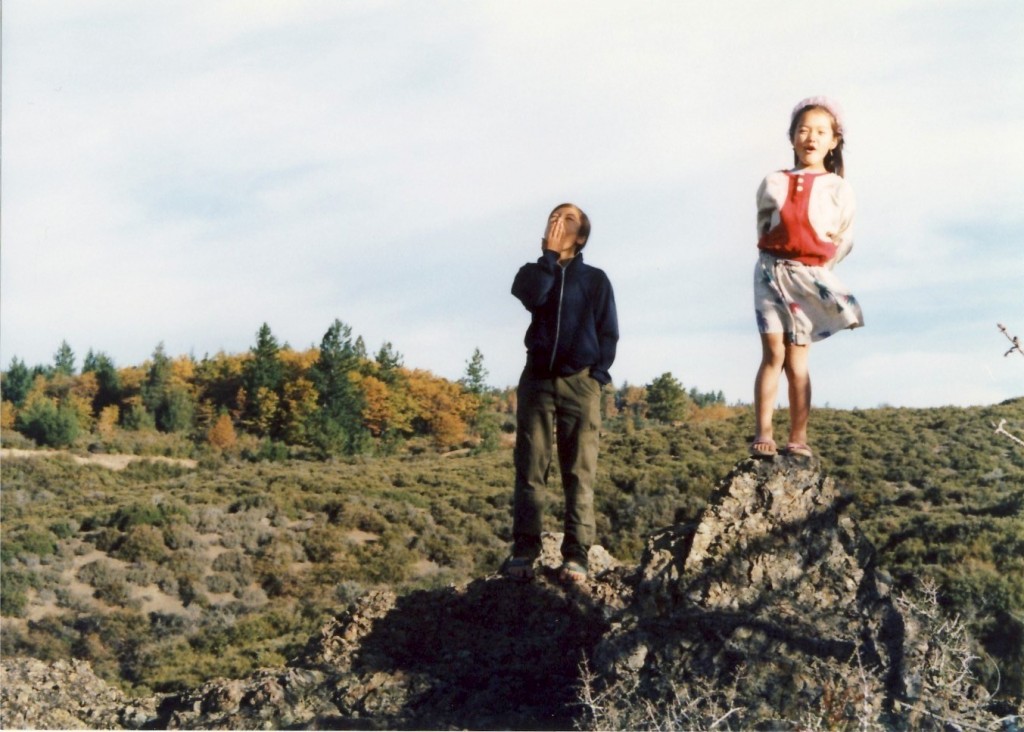Mahito & Forts
We used to build forts. When we were little, and when it was cold out, we would use tinkertoys. We had those giant tinkertoys, the old wooden ones that were three feet across, and could be shoved into spherical joints to build homey cubes, which we covered with blankets and sheets. Outdoors we built homes in every nook and cranny. Mahito had a love of trucks, “dig-digs” as he used to call them, and we spent hours digging a giant construction site (read: an 8x10x2 hole). To outsiders it may have appeared that we were playing with the trucks, but our secret ambition was to build a series of underground tunnels so we could more easily surprise people; so that we could win every snowball fight, and generally triumph over any adults who happened to pass by. Unfortunately Mahito’s 7-10 year old strength combined with my 4-7 year old inability to shove a shovel more than a few inches into the dirt meant that we never actually achieved our tunnel dream.
So we took to the trees– we would claim trees, and parts of trees, and our choices continually evolved as we cleared out small branches, created more comfortable living spaces and lookouts from which to watch the unsuspecting others around us. At some point, we embarked on a tree house. We were told by our parents that nails would hurt the trees, and Mahito took this to heart and felt strongly that nails, in addition to being bad for the trees, would be cheating (I don’t recall having much of a say in this). So over the years we built the best tree fortress I could ever imagine in a thicket of bay trees. Our domain had several entry points– two fir trees stood at the lower end of the slope thicket, so the first way in was to climb the fir trees and risk sap stuck to fingers and clothes. The main entry point was a series of bay trees several branches and platforms away from the firs. This led to the bulk of the living area, and linked to a set of branches that could be used as a seat, in a where I would spend much of my time (this was a great place to read, and also a good lookout point). The main area was also linked to a secondary area, which was ideal for spying on the neighbors (fyi to everyone who ever lived in the Hogan/ guest house). The link between the two areas was a single pole of douglas fir, about four inches in diameter, which we would use like a balance beam. I can only now, in retrospect, understand the concern of visitors watching small children scamper across beams and branches without a care in the world.
The last fortress I remember building was on a hill, in the northern California brush. Since our underground tunnels never came to fruition, we cut tunnels in the brush– continually expanding, improving, and adding passageways. We created a maze, which we knew so well that we would take different routes and race each other to predetermined destinations. This last fortress we created late– I was probably 11 or 12 when we did it, and I remember thinking we should have done it earlier. Those tunnels were thing of beauty.
In retrospect, the common thread to our forts seem to have been a combination of living quarters and protection from enemies. I’m not sure why we were so focused on always having escape hatches and ways to foil anyone who might be chasing us, but I do know that if it had ever happened, our assailants would never have had a chance. It makes me smile to think that in the end, Mahito’s most formidable opponents were those who managed to achieve the underground tunnels we never could: the ground-squirrels.
Aiwa
